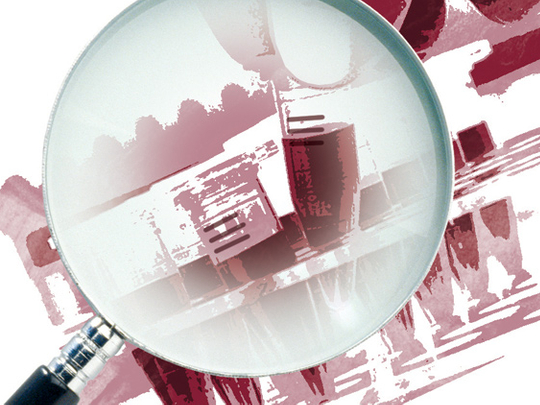
The “caution” flag is up when it comes to President Barack Obama deciding the validity of claims that Syrian forces loyal to Bashar Al Assad have used chemical weapons.
Perhaps it is good for all of that Obama was at the dedication of the George W. Bush Presidential Centre. I hope Obama visited the “Decision Points Theatre” and punched in “Iraq,” since that exhibit takes “the visitor ‘inside’ the decision-making process and policies developed during the [Bush] Administration,” according to the centre’s website.
I mention it because, while Obama was in Texas, his White House director of legislative affairs, Miguel E. Rodriguez, wrote to Senators Carl Levin and John McCain that the US intelligence community had assessed “with some degree of varying confidence that the Syrian regime has used chemical weapons on a small scale in Syria, specifically the chemical agent sarin.”
The assessment, the letter said, was based in part on “physiological samples,” meaning cells or skin samples, while others have said some soil samples were also involved.
During a White House backgrounder for reporters about the letter, a senior official clearly had Iraq in mind when he said: “It is crucial, given our own history with intelligence assessments, including intelligence assessments on weapons of mass destruction, that we are able to present evidence that is airtight.”
Unlike Bush and his top advisers, who took every shred of intelligence to magnify claims that Iraq’s Saddam Hussain had weapons of mass destruction, Obama and his team are proceeding cautiously.
The day after he returned from Texas, Obama said the current assessments were preliminary, based on intelligence gathered so far on which “we have varying degrees of confidence about the actual use.” He added: “There are a range of questions around how, when, where these weapons may have been used. So we’re going to be pursuing a very vigorous investigation ourselves,” along with others in the region and the UN.
Go back to October 7, 2002. Three days before the House and Senate were to vote on a resolution authorising Bush to use force if Iraq refused to give up its weapons of mass destruction — which it did not have — Bush gave a televised speech outlining “a grave threat to peace and America’s determination to lead the world in confronting that threat”. After referring to the September 11, 2001, attacks, Bush had said: “We agree that the Iraqi dictator must not be permitted to threaten America and the world with horrible poisons and diseases and gases and atomic weapons.” Surveillance photos, he said, revealed that the Iraqis were “rebuilding facilities that it had used to produce chemical and biological weapons.” He said Iraq “has a growing fleet of manned and unmanned aerial vehicles (UAV) that could be used to disperse chemical and biological weapons” and is “exploring ways of using these UAVs for missions targeting the United States”. He said: “Iraq and Al Qaida have had high-level contacts that go back a decade” and the US “learned that Iraq has trained Al Qaida members in bomb-making and poisons and deadly gases.” He said Iraq “could decide on any given day to provide a biological or chemical weapon to a terrorist group or individual terrorists,” which “could allow the Iraqi regime to attack America without leaving any fingerprints”. And “the evidence indicates that Iraq is reconstituting its nuclear weapons programme”. How did Bush know that? Satellite photographs revealed that “Iraq is rebuilding facilities at sites that have been part of its nuclear programme in the past”. Then there was the attempt “to purchase high-strength aluminium tubes” used to help enrich uranium.
Finally, the slogan that the world still remembers: “Facing clear evidence of peril, we cannot wait for the final proof — the smoking gun — that could come in the form of a mushroom cloud.”
Bush had no such “clear evidence of peril.” But the resolution passed both houses of Congress and four months later, the US-led coalition invaded Iraq, using the resolution as its legal basis for action.
The lesson should be clear. Allegations of chemical use in Syria must be double-checked. Something happened on March 19 at Khan Al Assal, a village outside the northern city of Aleppo, where the Syrian government and rebels accused each other of chemical warfare. There are reports from British officials that Syrian troops may have been victims of either a projectile going to the wrong target or an Al Assad-government attempt to implicate the rebels.
The British and French have said they have soil samples and interviews indicating chemicals were also used on March 19 in Ataybah, a village near Damascus, and perhaps on December 23 in Homs.
The UN has a 15-person special investigation team, headed by Swedish scientist Ake Sellstrom, waiting in Cyprus for deployment whenever the Syrian government gives the okay. So far the regime has said the team can go only to Khan Al Assal.
Delays hamper any inquiry. Urine samples are helpful for the first few days. Blood has a longer shelf life. Sophisticated technology can look for agents in individuals’ DNA and in soil — which can be present for weeks. Still, traces will not tell investigators who used them.
The harder question is what does Obama do if “airtight” evidence is found involving the Al Assad regime?
If the Bush “Decision Points Theatre” exhibit offers any lesson, it should be not to trust a president’s “gut instinct” when it comes to ordering military action — particularly if that president has never been to war himself.
— Washington Post
Walter Pincus reports on intelligence, defence and foreign policy for the Washingon Post and writes the Fine Print column.









